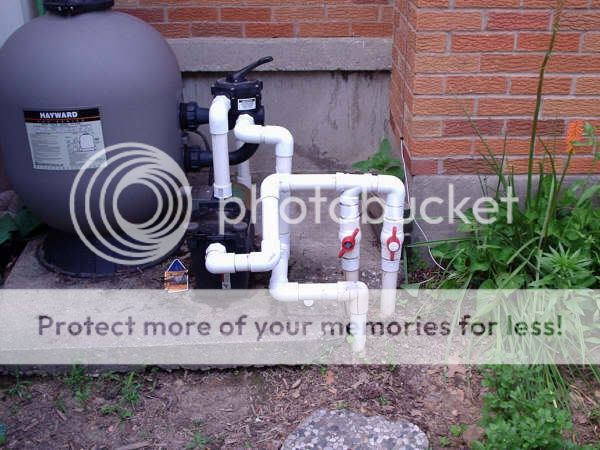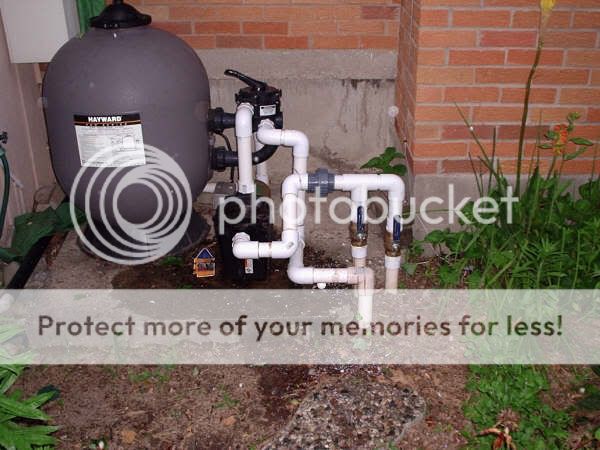To azkyle: Can you see that big black valve in RUGGED's photos. There is a position on that valve that says backwash, you position the valve there and turn on the pump. The sand is
backwashed out of the filter and comes out that vertical pipe (that you can barely see) on the backside of that valve. People generally hook a flexible hose to it and just just let it flow somewhere in the yard.
You
add sand to the pool skimmer box (with the pump running and that black valve in the filter position) to replenish the sand in the filter. You can add a union if you like, but it's completely unnecessary. I can't see the filter connections in your photos but there are probably unions there to remove the filter for winter storage. I can see the unions in RUGGEDS photos right next to the filter. Your filter is probably similar. The pump can stay outside, as long as all the water is removed.
To Gary: That looks like a pretty standard pool installation. Yes, the two valves are on the suction side. One line probably comes from the skimmer box and one line from the bottom drain. If you vacuum the pool with the vac hose hooked into the skimmer box, you shut off the bottom drain to get max suction thru the vac. If you're sweeping the pool toward the bottom drain, you shut off the skimmer box. Most of the time they just stay fully open.
The other line going into the ground (the one with no valve) is the return of the filtered water to the pool and probably splits into 2 lines that dump water into the pool (one at each end) at the wall.
To RUGGED: HA if you ever decide to do any pool work again

you might check out The Jandy valves like this
http://www.poolplaza.com/P-JDY-56-4052.html
They are made for the harsh chemical environment of pool water. I owned a home with a pool that had these valves and they worked very smoothly for ten years and were still there when I sold the home . They are available in any good pool supply store. As you can see, they ain't cheap either.


